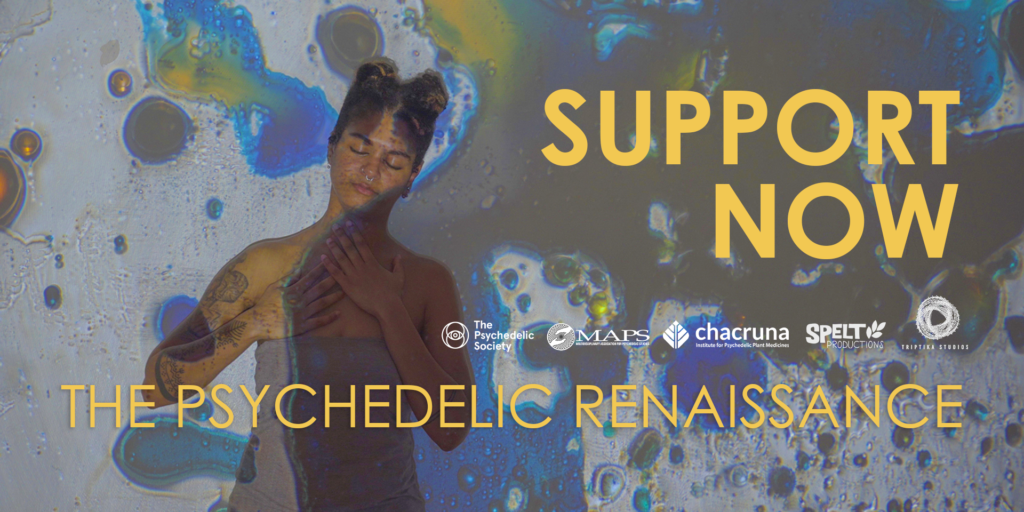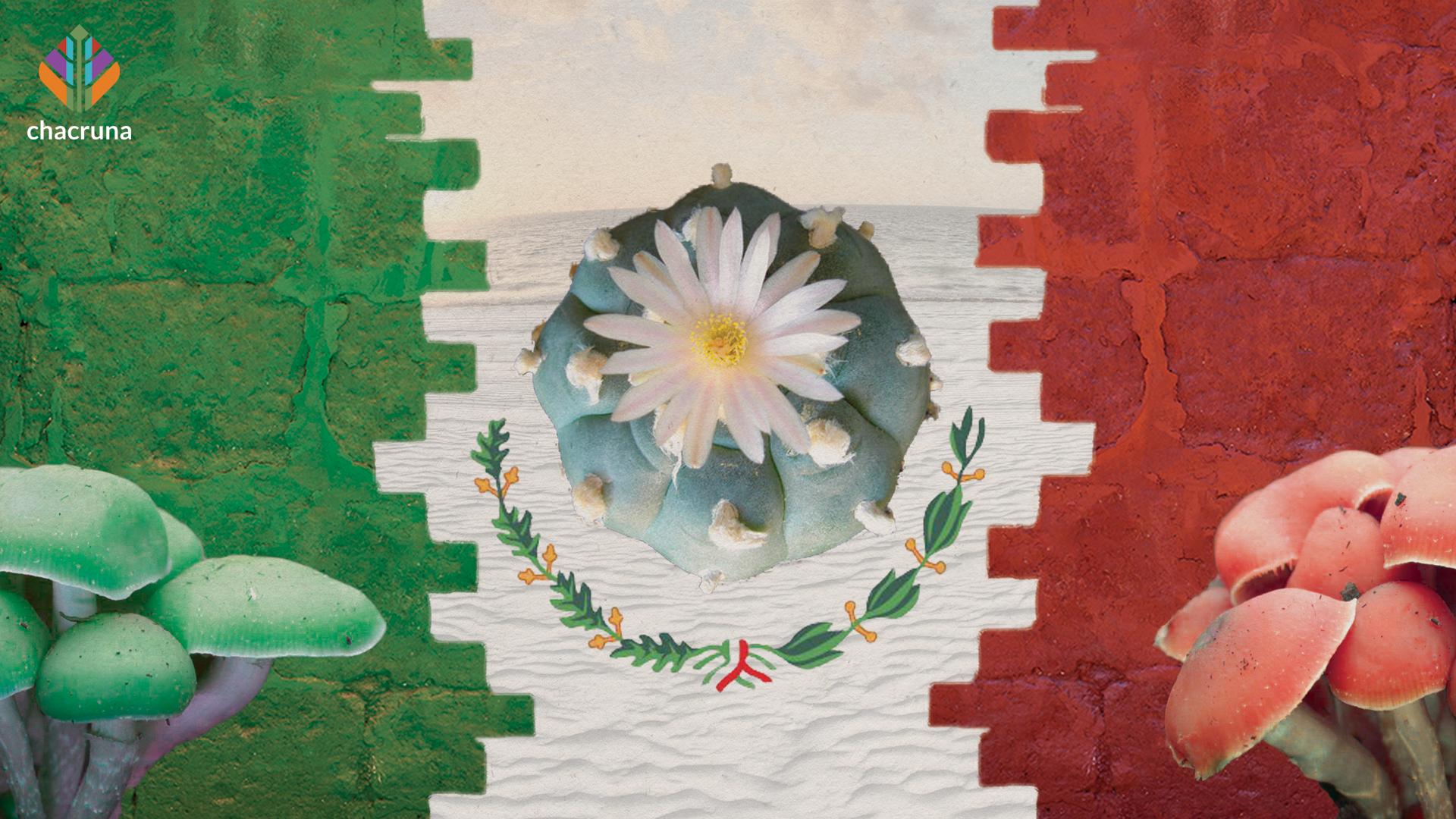In the past 15 years, the topic of drugs has become pertinent in various dimensions, from debates in the public sphere to health-related issues, human rights, and security; even in the implementation of new laws and reforms. However, a large part of these efforts has focused on marijuana and its entry into the regulated market for medical and recreational uses.
Emphasis has been placed on recognition and reclassification of certain pharmacological extracts and derivatives of cannabis that provide therapeutic value, given that other plants remain prohibited and without due recognition of their traditional, therapeutic, and medicinal properties. These types of plants are known as “entheogens” and they currently are being discussed in two legal initiatives in Mexico.
Entheogens were described and characterized in the celebrated book from 1978, The Road to Eleusis: Unveiling the Secret of the Mysteries, byRobert Gordon Wasson, Albert Hofmann, and Carl Ruck. In this text, they proposed the term “entheogen” to designate substances that cause ecstatic delirium and shamanic states.
In a strict sense, only those drugs that produce visions and that can be shown to have figured in religious or shamanic rites can be called entheogens; but in a broader sense, the term can be applied to other drugs, both natural and synthetic, that induce alterations in consciousness
We can speak of “entheogen” as an adjective of plants or, more generally, as entheogen substances. In a strict sense, only those drugs that produce visions and that can be shown to have figured in religious or shamanic rites can be called entheogens; but in a broader sense, the term can be applied to other drugs, both natural and synthetic, that induce alterations in consciousness (Wasson et al., 1980).
The authors argued that the term “hallucinogen” imposed a value judgement on the nature of altered perceptions, limiting them to the terrain of deviations or psychiatric afflictions. One year later, in 1979, the research of Wasson, Hoffman, and Ruck was taken up in an article titled “Entheogens” that was published in the Journal of Psychoactive Drugs. Jonathan Ott and Danny Staples collaborated in this second work, analyzing the etymology of the word entheogen (theos, or “god within”) to denominate those plants that “produce visions and that have been shown to figure within religious or shamanic rites” (Ruck et al.,1979).

Recordings are now available to watch here
From this conceptual analysis, three categories were created: 1. traditional natural entheogens are those plants, animals, or plant and animal-based mixtures that provoke changes to consciousness, and whose ingestion in religious or shamanic rites is documented; 2. synthetic or artificial entheogens are those substances obtained in laboratories whose ingestion created similar effects described with traditional natural entheogens; and 3. new natural entheogens, are plants or animal substances whose active principles coincide with those of traditional natural entheogens and induce similar effects (López, 2003). This characterization brought about an interdisciplinary perspective, where the substances could provoke a dialogue across religions, cultures, and notions of perceptivity that was sufficient to adequately describe a set of traditional practices.
However, it is important to point out that Indigenous peoples have been affected by political decisions linked to global regimes that have fueled colonialism, discrimination, and inequality.
However, it is important to point out that Indigenous peoples have been affected by political decisions linked to global regimes that have fueled colonialism, discrimination, and inequality. In Mexico, historically, the consumption of some entheogens, like peyote and psychoactive mushrooms, has been attached to Indigenous traditions. But, since the second half of the twentieth century, these entheogens have attracted the interest of travelers, tourists, cultural enthusiasts, researchers, and non-Indigenous entheogen practitioners (Genet & Labate, 2019).
Taking this context into account, Mexico is currently debating ritual and traditional uses, as well as non-Indigenous and therapeutic uses of entheogens. It is worth noting that the processes of reform and debate on drug policies in Mexico are being driven more by public administration matters than by members of civil society.
In particular, two legal reform proposals have been floating in the public realm of this country during the past year. The first is a legal initiative to reclassify the current mushroom and peyote norms proposed at the Senate level by Armando Contreras Castillo, a congressman from a political coalition that includes several new parties (including MORENA of the current president Andrés Manuel Lopez Obrador). The second is a request for legal protection for the consumption of peyote and mushrooms, presented by lawyer and activist Sergio Morales, that was discussed this past March in Mexico’s Supreme Court.
Indigenous peoples and local communities are considered the decisive actors in the conservation and sustainable development of the land. This is important, given Mexico’s ethnic diversity, where 25 million people identify as Indigenous
Accordingly, on March 3, 2021, the first initiative to reclassify the laws regarding naturally-derived entheogens was proposed (Gaceta Parlamentaria, 2021). This proposal includes four sections. The first deals with the protection of Mexico’s biological and cultural resources. From this perspective, Indigenous peoples and local communities are considered the decisive actors in the conservation and sustainable development of the land. This is important, given Mexico’s ethnic diversity, where 25 million people identify as Indigenous (Instituto Nacional de Estadística y Geografía [INEGI], 2015).
The second section discusses the problems of the current categorization of entheogens as substances that generate grave problems in public health, for which it proposes changes to articles 240 and 245 of the General Health Law (Ley General de Salud). This law is believed to not only prohibit possession, transportation, preparation, and other activities related to peyote, but the argument also makes scientific research and biological conservation of the plant more difficult and leads to the depredation of the plant by non-Indigenous people.
The third section focuses on legal arguments that rest on traditional health knowledge during pre-Hispanic and Colonial periods, the legal status of entheogens in Mexican laws, and the complex international system around drug regulation and conventions that have created the current landscape. Likewise, it brings together scientific evidence on entheogens of natural origin that are not susceptible to misuse and that do not constitute a current problem in the realm of public health.
Based on the arguments presented within the legal initiative, it was proposed that an interdisciplinary institute specialized in entheogen medicine be created with the participation of representatives of Indigenous communities and organizations, civil society, health and human rights professionals, and academics from the social and anthropological fields, with the goal to adopt an agenda for 2030 for sustainable development and reciprocity with Indigenous peoples. Nonetheless, the initiative presented and published by the congressional gazette, Gaceta Parlamentaria, was not discussed in the plenary nor approved by the chamber, and remains in the legislative waiting room.
The request for legal protection by Sergio Morales, an activist who belongs to an organization focused on drug policy (Latinoamérica por una Política Sensata de Drogas [Latin America for a Sensible Drug Policy]), was discussed March 23, 2021 by the First Hall of the Supreme Court of Mexico, where minister Jorge Mario Pardo Rebolledo brought about the request for protection of the recreational and therapeutic use of mushrooms, peyote, and psilocybin, based on a previous court hearing in 2019 determining authorization for protection of the use of cannabis for ideological, personal, cultural identity, ancestral customs, cosmogony, therapeutic, and recreational uses of said substances and species (Suprema Corte de Justicia de la Nación [SCJN], 2021).
Discover the Indigenous Reciprocity Initiative of the Americas
After an analysis of the legal problem and an in-depth study of the grievances of the applicant, I consider the following questions: Question 1: Was the complainant’s rights to self-definition and self-consciousness as belonging to an Indigenous group violated? Question 2: Were the parameters of the sentence adequate for determining what expressions of ethnic groups are compatible with the values and the rights to participate in cultural life? Question 3: Are the laws surrounding the constitutionality and prohibition of the consumption of cannabis applicable to the consumption of peyote and hallucinogenic mushrooms?
In addition, it was determined that mushrooms and peyote “are not compatible with the right to participate in cultural life” and that the case of recreational use of cannabis and traditional use of entheogens was not considered equivalent.
In its virtual session, the First Hall did not agree, given that the grievances mentioned were moot from the minister’s perspective because the self-definition of belonging to a determined given ethnic group was not justified in Sergio Morales request. In addition, it was determined that mushrooms and peyote “are not compatible with the right to participate in cultural life” and that the case of recreational use of cannabis and traditional use of entheogens was not considered equivalent.
In sum, both proposals strengthen public, political, and legislative debates on psychoactive substances and their relationship with different actors and users, public servants, activists, legislators, and decision-makers. In this way, the landscape for drug reform becomes more robust from a multicultural and human rights perspective, harmonizing the international system on drug control with local law and the protection of Indigenous peoples’ rights, biocultural rights, and the free development of individual personhood.
Nonetheless, despite these initiatives strengthening the debate on entheogens, up until this moment, there has been no public forum to consult Indigenous groups, the opinion of legal advisers has yet to be published, and there has not been any evidence of the creation of a link between legislative bodies and the chamber of congress with Indigenous authorities.

Please donate to the Psychedelic Renaissance Documentary
Nonetheless, despite these initiatives strengthening the debate on entheogens, up until this moment, there has been no public forum to consult Indigenous groups, the opinion of legal advisers has yet to be published, and there has not been any evidence of the creation of a link between legislative bodies and the chamber of congress with Indigenous authorities. At the same time, it is fundamental that we continue to study proposals and alternatives for the preservation of biological diversity of the endemic species through policy protections, since it is the Mexican government’s obligation to protect and respect the traditional knowledge of Indigenous peoples and communities in order to guarantee their preservation and sustainability.
Art by Trey Brasher.
—
Note:
This paper was originally published by Chacruna Latinoamérica here.
References
Cámara de Diputados. (2021, March 3). Gaceta Parlamentaria, 26, 5731–5, http://gaceta.diputados.gob.mx/Gaceta/64/2021/mar/20210303-V.html#Iniciativa6
Genet, M., & Labate, B. C. (2019). Reflexiones sobre la expansión y legalidad del campo peyotero en México [Reflections on the expansion and legality of the peyotero field in Mexico]. Frontera norte, 31, e2060. https://doi.org/10.33679/rfn.v1i1.2060
Instituto Nacional de Estadística y Geografía. (INEGI). (2015). Principales resultados en Encuesta intercensal 2015 [Main results in Intercensal Survey 2015]. Aguascalientes, México: INEGI. https://www.inegi.org.mx/contenidos/programas/intercensal/2015/doc/eic_2015_presentacion.pdf
López, S. (2003). Los enteógenos y la ciencia [Entheogens and science]. Madrid: Universidad Complutense de Madrid. https://eprints.ucm.es/id/eprint/8059/1/SLP_Enteogenos__y_Ciencia.pdf
Ruck, C., Bigwood, J., Staples, D., Ott, J. & Wasson, G. (1979). Entheogens. Journal of Psychedelic Drugs, 11(1–2), 145–146. https://doi.org/10.1080/02791072.1979.10472098
Suprema Corte de Justicia de la Nacion (SCJN). (2021, March 23). Amparo en revisión 374/2020 [Support in revision 374/2020]. https://www.scjn.gob.mx/sites/default/files/listas/documento_dos/2021-02/AR-374-2020-150221.pdf
Wasson, G., Hofmann, A., & Ruck, C. (1980). El camino a Eleusis. Una solución al enigma de los misterios [The road to Eleusis. A solution to the riddle of mysteries]. México: Fondo de Cultura Económica: México, 235 pp.
Take a minute to browse our stock:
Did you enjoy reading this article?
Please support Chacruna's work by donating to us. We are an independent organization and we offer free education and advocacy for psychedelic plant medicines. We are a team of dedicated volunteers!
Can you help Chacruna advance cultural understanding around these substances?


















